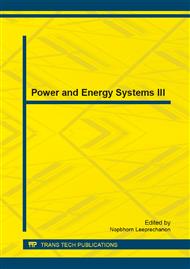p.356
p.361
p.365
p.370
p.375
p.380
p.386
p.392
p.397
Atomic Layer Deposition of Molybdenum Oxide for Solar Cell Application
Abstract:
This work focuses on synthesis of molybdenum oxide (MoO3) by Atomic layer deposition (ALD) using molybdenum hexacarbonyl [Mo (CO)6] and ozone. In-situ growth characteresticswerestudied by Quartz Crystal Microbalance (QCM). ALD temperature window for this material lies between 165 to 175°C giving a maximum growth rate of 0.45 Å per ALD cycle. Negligible nucleation was found by QCM studyindicating a linear growth of the film. Effect of different oxidants on the growth rate is also studied.As-deposited film is amorphous in nature which converts to monoclinic-MoO3 after annealing as seen by taransmission electron microscopy.
Info:
Periodical:
Pages:
375-379
Citation:
Online since:
January 2014
Authors:
Price:
Сopyright:
© 2014 Trans Tech Publications Ltd. All Rights Reserved
Share:
Citation:



